Peter Morrell goes to this ancient Italian seat of learning and is amazed by its fascinating historical attractions.
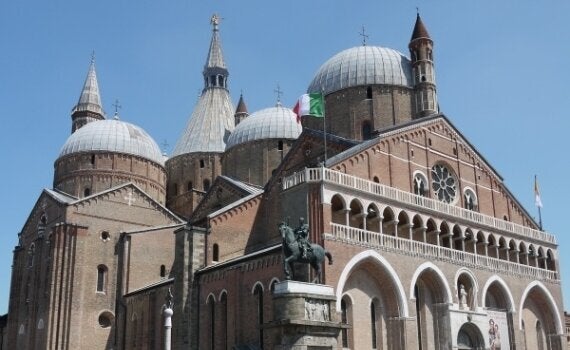
The Basilica dedicated to St Anthony of Padua - Photo: Peter Morrell
When you are in a city where the university can boast Galileo as past chair of mathematics you know that it attracted some of the world's finest academics and artists. It was not the university's only claim to fame, in 1545 it created the world's first Botanical Gardens, now a UNESCO World Heritage site and in 1678 Elena Lucrezia Cornaro Piscopia became the first women ever to be awarded a degree.
The Basilica dedicated to St Anthony of Padua
The academic heritage of the city sets the scene for it's many cultural, artistic and architectural attractions. My exploration started at the Basilica dedicated to St Anthony of Padua. An equestrian bronze sculpture of Gattamelata by Donatello stands in front of the imposing structure which features both Byzantine and Romanesque architectural styles.
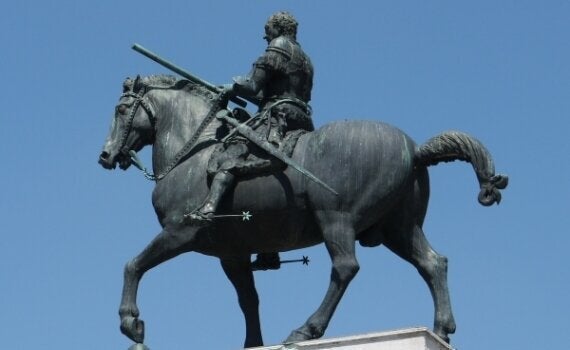
Donatellos equestrian bronze sculpture of Gattamelata - Photo: Peter Morrell
In the cool, quiet interior I made my way to the tomb of St Anthony, it is the end of a journey for many pilgrims. They stand in silent prayer, their hand on the black marble side of his resting place, imploring the Saint for a miracle known only to them.
Above the altar were three elaborate reliquaries containing some of the Saint's remains, the jaw bone, the larynx and the most prized relic, his tongue, still intact after more than seven centuries.
The Piazza Prato della Valle
There are multiple kilometres of porticos in the city, keeping people dry in the winter and shaded in the summer, they made the short wander to the Piazza Prato della Valle, quite comfortable. It is Italy's largest square, a huge garden with central fountain and an elliptical canal decorated with 78 statues on either side of the waterway.
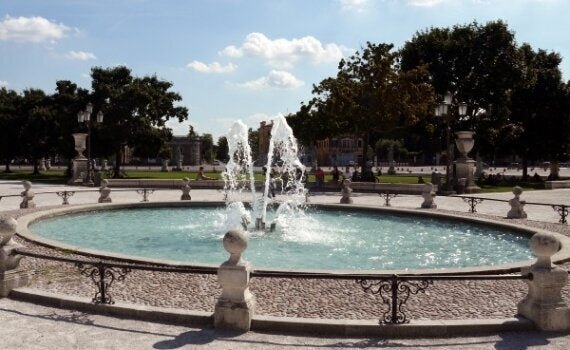
Fountain in the Piazza Prato della Valle - Photo: Peter Morrell
Palazzo della Ragione
A few minutes from the square is the old Jewish Quarter, its narrow streets and high rise buildings were in total contract to the large sunny open space I suddenly burst into, the Piazza delle Erbe. Here the Palazzo della Ragione has a immense great hall and the walls are decorated with hundreds of allegorical frescos. At one end is a giant trojan horse, dwarfed by the sheer enormity of its surroundings.

The Trojan Horse and Frescos in Palazzo della Ragione - Photo: Peter Morrell
The Scrovegni Chapel
My final stop was the pinnacle of the city's artistic heritage, the Scrovegni Chapel. Commissioned by Enrico Scrovegni 1303 as an act of penitence, he chose Giotto to both design the chapel and to decorate it.
In two years Giotto created a fresco cycle depicting the major events of Christ's life. The powerful images are still fresh after 700 years. One of the most striking panels is Judas kissing Christ and equally impressive is the wall above the entrance where The Last Judgement serves as a warning to sinners.
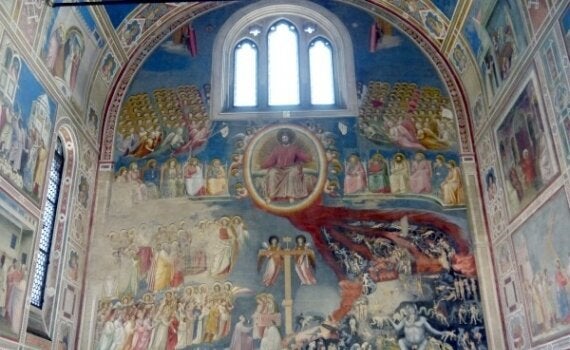
The Last Judgement - Photo: Peter Morrell
A short walk from the Chapel was my home for the next two days, the comfortable Hotel Europa. A few steps down the street was the bar/restaurant Baessato Padova where after a hard day's sightseeing you can be revived with an Aperol Spritz.
Padua is less than 40 kilometres from Venice and the surrounding area was used by Venetians to build villas that displayed their wealth. Many were designed by Andrea Palladio, born in Padua,. Palladio was heavily influenced by the architecture of ancient Rome and his 'Palladian Style' continues to be a strong influence in building design.
Villa Contarini
On day two I travelled about 20 kilometres to Palladio's Villa Contarini. The building today has a more Baroque feel after renovations. The house was primarily occupied in the summer for parties and lavish rooms are decorated with frescos of Bacchanalian feasts. The main atrium has an open balcony which allowed the music of an unseen orchestra to entertain guests.
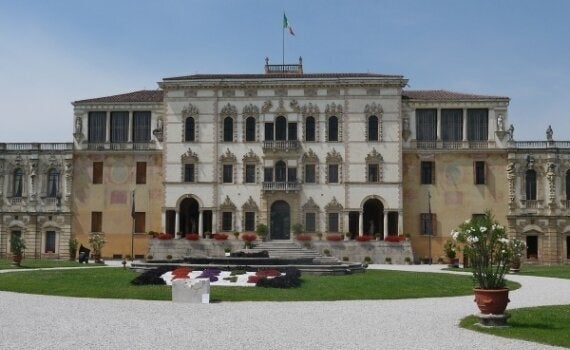
Villa Contarini - Photo: Peter Morrell
Cittadella
From Villa Contarini it was a short drive to the historic walled city of Cittadella. This is a medieval masterpiece enclosed by 1.5 kilometres of well preserved brick battlements. There is a circular path around the fortifications from where you can see down into the town. Looking outwards are the Asiago Mountains where the famous WW1 battle took place.
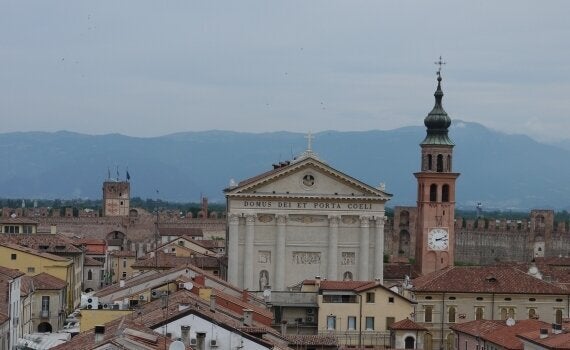
Cittadella - Photo: Peter Morrell
Back at ground level I walked through the street market thronged with people Looking at the food stalls made me hungry so I had lunch at Taverna degli Artisti. This meal brought together the entire essence of Italian cuisine, it was simple and fresh with powerful natural flavours.
Padua Expo Week
In the evening there was a gala dinner to celebrate Padua Expo Week held in the grounds of the Botanical Gardens. It was a glamorous event and was a showcase for everything good about the city, from the concert orchestra to the food cooked by local restaurants and wine from surrounding vineyards.

Architecture in Padua - Photo: Peter Morrell
Villa Pisani and the Naviglio del Brenta
How did the Venetians travel, complete with crockery, cutlery and bedding travel to their country villas? The answer was by boat along the Naviglio del Brenta, a canal which runs from the Venice Lagoon to the River Brenta. Along it's banks are villas of all shapes and sizes. One of them is Villa Pisani. built by Alvise Pisani, it is a pure statement of power and influence. Everything is in the grand scale, at the end of a water garden is the façade of a Baroque villa which was in fact the stables. It was subsequently owned by Napolean and in 1934 saw the first meeting between Adolf Hitler and Benito Mussolini.
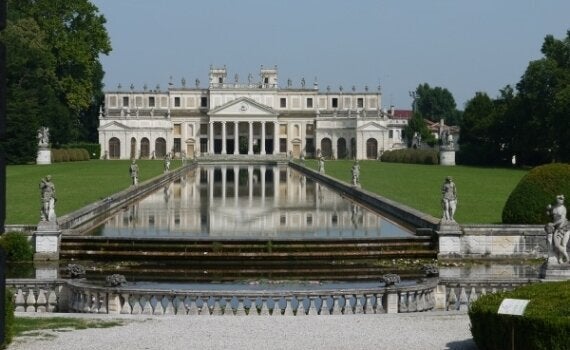
The Stables at Villa Pisani - Photo: Peter Morrell
My trip was over and it had been an eye opener in terms of the wealth of architecture and art. Padua can easily hold the interest of a visitor and Venice is only a twenty minute train ride away so it makes a good base from which to explore the region.
Nearest Airport: Venice Marco Polo with regular flights from the UK
For more information on visiting Padua go to www.padovatravel.it